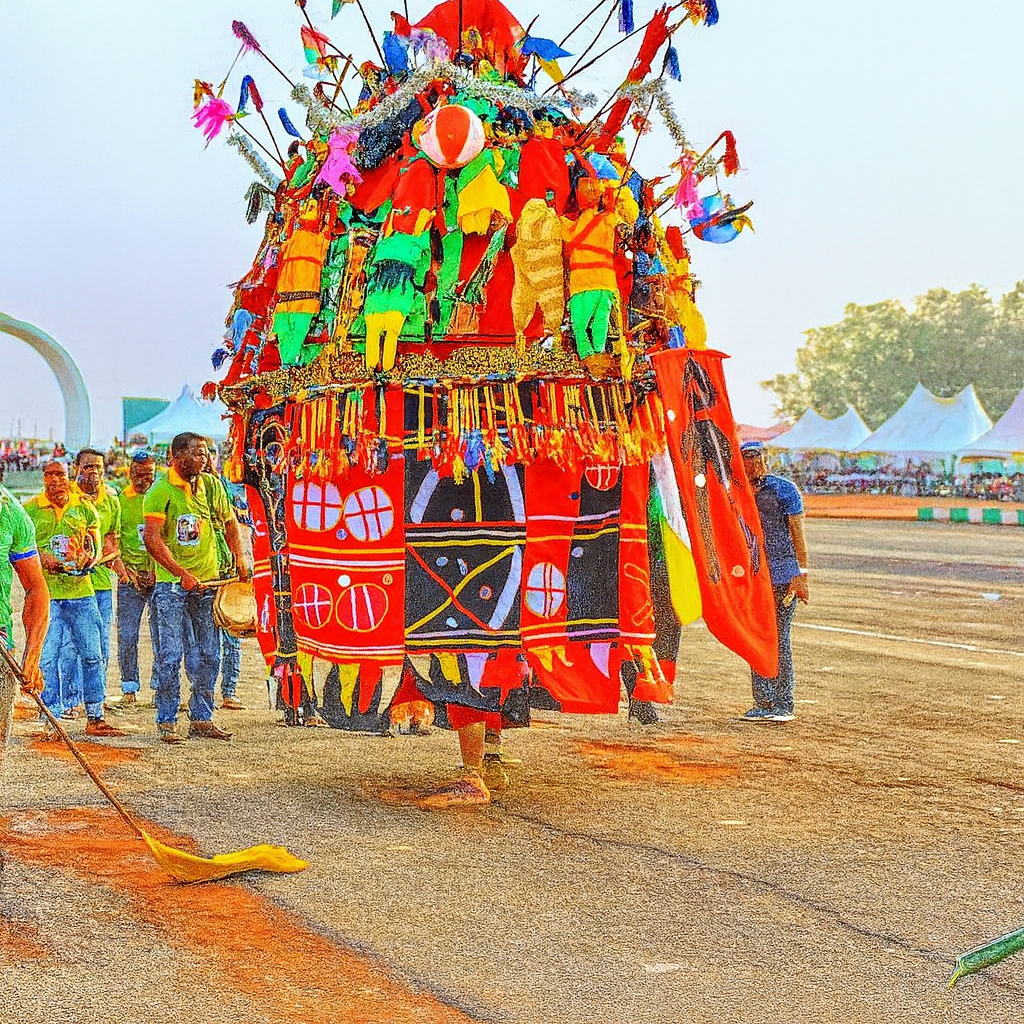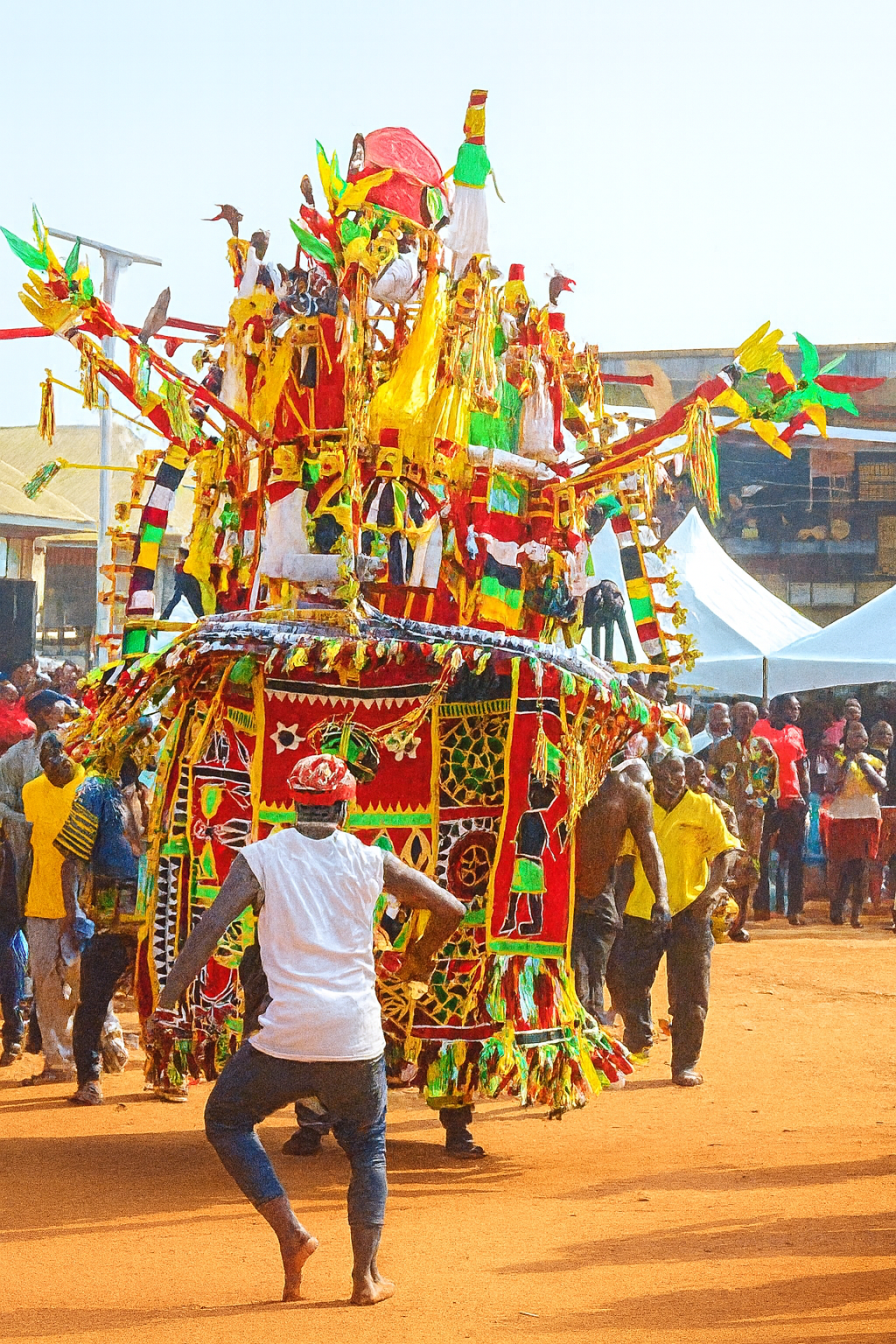The Ijele Masquerade stands tall — literally and symbolically — as one of the grandest and most revered cultural icons in Igbo tradition. Towering above other masquerades in both height and prestige, the Ijele represents the pinnacle of artistic creativity, spiritual symbolism, and community pride among the Igbo people of southeastern Nigeria.
Often described as “the king of masquerades”, Ijele is more than a spectacle; it is a living testament to Igbo history, spirituality, and social order.
Origins and Meaning
The Ijele originates from the Anambra and Enugu regions of Igboland, particularly among communities such as Anam, Umueri, and Aguleri. Oral tradition holds that the Ijele emerged centuries ago as a royal and sacred masquerade, symbolizing authority, unity, and ancestral power.
The term “Ijele” itself denotes grandeur and supremacy — a title reserved for the largest and most important masquerade within the community. It is often the last to appear during festivals, reinforcing its position as the culmination of the masquerade hierarchy.

A Towering Work of Art
Standing between 12 and 15 feet tall, the Ijele is a towering masterpiece of creativity. Constructed with bamboo frames, colorful fabrics, mirrors, beads, and figurines, its structure is an architectural feat that takes months to complete.
The costume’s upper section, called the “canopy”, is decorated with miniature figures — animals, humans, and symbolic objects — representing the diversity of life and the interconnectedness of the Igbo world. Beneath it, the performer is fully concealed, moving with surprising grace despite the costume’s immense weight.
The Ijele’s visual splendor is often accompanied by drummers, singers, and dancers, creating a powerful and immersive performance that blends art, music, and spirituality.
Cultural and Spiritual Significance
The Ijele is not merely entertainment; it is a spiritual messenger believed to embody ancestral spirits who visit the living to bless, guide, and protect the community. Its performance is therefore ritualistic, demanding purity and respect.
Traditionally, the Ijele appears during new yam festivals, coronations, burials of titled men, and community celebrations. Its presence signifies peace, prosperity, and divine favor. In many communities, other masquerades must withdraw or kneel upon Ijele’s arrival — a mark of its undisputed supremacy.
Ijele’s grandeur reflects the Igbo philosophy of hierarchy and respect, where every social structure, from family to community, operates within an ordered balance.
The Making of an Ijele
Creating an Ijele is a communal effort that can take an entire village months to accomplish. Skilled artisans, known as ndi mgbamgbo, craft its structure using bamboo, cane, cloth, mirrors, and symbolic ornaments.
The design tells stories — from Igbo cosmology and daily life to proverbs expressed through visuals. Each layer, color, and motif carries meaning, making the Ijele both a work of art and a cultural archive.
When completed, traditional rituals are performed to “activate” it — a process that invites ancestral energy into the masquerade before its public appearance.
Ijele in the Modern World
In today’s world, the Ijele has transcended its traditional setting to become an international cultural ambassador. It has graced stages at national festivals, tourism expos, and cultural exhibitions around the world — proudly representing Igbo civilization and Nigerian heritage.
The Nigerian Tourism Development Corporation recognizes Ijele as a national cultural symbol, and in 2008, UNESCO inscribed it on the Representative List of the Intangible Cultural Heritage of Humanity under Nigeria’s nomination.
Even in modern times, Ijele continues to inspire fashion, art, and film, symbolizing the endurance of Igbo creativity and spirituality.
The Living Spirit of Ijele
The Ijele Masquerade remains a vibrant expression of who the Igbo people are — creative, spiritual, communal, and deeply proud of their heritage. It unites the past and present, bringing ancestral wisdom into modern consciousness.
When the Ijele dances, it is not just a performance — it is the spirit of a people in motion, honoring their history, celebrating their unity, and reaffirming the cultural heartbeat of Ala Igbo.
Closing Thought
To witness the Ijele is to behold the soul of the Igbo nation — majestic, colorful, powerful, and alive.
In every drumbeat, every movement, and every shining mirror, the Ijele reminds us that culture is not just remembered — it is lived.
